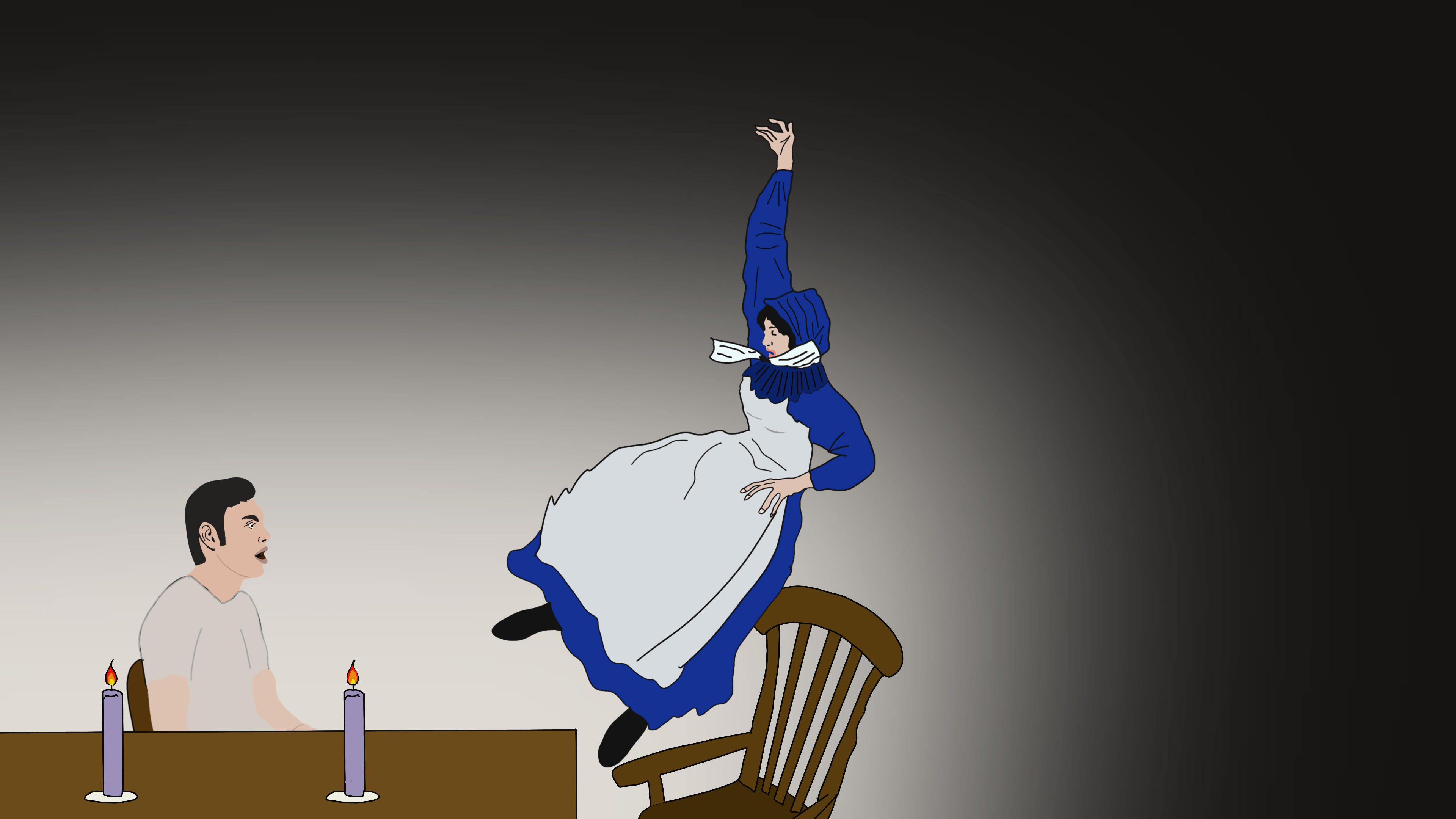Spontaneous Human combustion occurs when a person bursts into flames from a chemical reaction within, apparently without being ignited by an external heat source. Whether it could happen to humans has long been a subject of debate and competing theories exist among scientists and academics. There have been several interesting cases of people burning to death throughout history, with no apparent source for what could have started the fire. In a number of these cases, the corpse’s torso and head are charred beyond recognition, but oddly some extremities remain intact, with the hands, feet, or legs apparently unburned. Also, all too often, the room around the person may show minimal fire damage, and sometimes a greasy residue is left behind on furniture and walls.
Perhaps the most famous case of Spontaneous Human Combustion involves the mysterious case of Mary Reeser, a woman who was found burned in her apartment in a perplexing manner. Her body was completely burned with nothing but ashes. Oddly her skull had shrunk, and her extremities were unscathed. All the surrounding area was largely untouched by the fire, and there was no visible source of external ignition.
Throughout recent history, there have been several cases of spontaneous human combustion, with several appearing in renowned literary sources such as Mark Twain and Herman Melville. Even the bible mentions spontaneous human combustion. A more recent example though involves a case in Ireland, the first ever case of spontaneous human combustion in that country.
On December 22, 2010, In County Galway Ireland, local resident Michael Faherty would die in a bazaar manner. Mr. Flaherty burned to death in home, with no apparent source of ignition, and only himself and the area above and below him showed signs of fire damage. As police began investigating what happened, they really began to see this was an extraordinary case. There was no trace of an accelerant and there had been nothing to suggest foul play. There was a fire burning nearby in a fireplace, but forensic experts insist that the fire was contained. All in all, no source of external ignition was found, and the fire seemed contained for the most part.
The death was truly perplexing. West Galway coroner, Kieran McLoughlin, said there was no other explanation for the death of 76-year-old Michael Faherty. He said it was the first time in his 25 years as a coroner that he had reached this conclusion.
An Irish police crime scene investigator and a senior fire officer were equally confused and reached the same conclusion as the McLoughlin. Both said they had not come across such a set of odd circumstances before.
It should be noted spontaneous combustion is a very real phenomena, it just unclear if it can happen to humans.
Some things have been scientifically proven to spontaneously combust without an outside heat source. One example is a pile of oily rags stored in a bucket. As oxygen from the air hits the rags, it can slowly raise their internal temperature high enough to ignite the oil.
Wet piles of hay have also been known to spontaneously combust. When they decompose, microbes and bacteria living inside them can generate the heat needed to spark.
There have been more than 200 reported cases of spontaneous human combustion in the past 300 years. The Danish anatomist Thomas Bartholin is credited with coining the term “spontaneous human combustion”. In 1663, he described how a woman in Paris “went up in ashes and smoke” while she was sleeping. The straw mattress on which she slept was untouched by the fire.
As odd as these tales are, perhaps what s stranger is the reports about spontaneous human combustion victims who didn’t simply burst into flames. These individuals developed strange burns on their bodies with no obvious source.
Researchers know that spontaneous combustion is possible, it’s just not completely evident if it can happen in humans yet.
(Did this Statue of Jesus Close Its eyes?- read here)
So, the debate rages on. And several theories have been proposed what happens exactly to the body.
One Theory is the wick effect. The wick effect is the partial or total destruction of a human body by fire, when the clothing of the victim soaks up melted human fat and it acts like the wick of a candle. The wick effect is a phenomenon that is found to occur under certain conditions and has been thoroughly observed and studied. So, the wick effect does explain how the fire burns slow and long, but it really doesn’t answer how the fire begins in the first place.
In 1998 a BBC television show performed an experiment with the wick effect. The host wrapped a pig corpse in a blanket, then lit it with some petrol. As the host looked on, the animal’s body fat liquified, adding more fuel to the fire. By the time he put out the flames a few hours later, the slow, intense burn had converted a large percentage of the pig’s flesh and bones into ash. the dead pig’s feet remained intact and most the room remained unharmed. Extremities don’t contain as much fat as the core of the body does, so they’re less likely to go up in smoke when the wick effect occurs.
Another theory proposed by Brian J. Ford suggests that ketosis, possibly caused by alcoholism or low-carb dieting, produces acetone, which is highly flammable and could therefore lead to spontaneous combustion.
One other belief says the fire is sparked when methane (a flammable gas produced by gut bacteria) builds up in the intestines and is ignited by enzymes in the body. Yet this raises the question of why there are no reported instances of spontaneous combustion in cows.
It’s also theorized that the fire begins because of static electricity building up inside the body or from an external geomagnetic force.
Yet all these theories are unproven at this time and the question still remains whether a human can spontaneously combust. Perhaps what’s so fascinating about the Irish case is that it’s so recent compared to many of the cases through history. One would think with all the advanced forensic tools, they would be able to pinpoint what ignited the fire.
As more cases arise in the future, and perhaps one of them will provide the evidence needed as to what causes this odd phenomenon and finally, we can answer this centuries old question.





One thought on “The First Irish Case of Spontaneous Human Combustion”